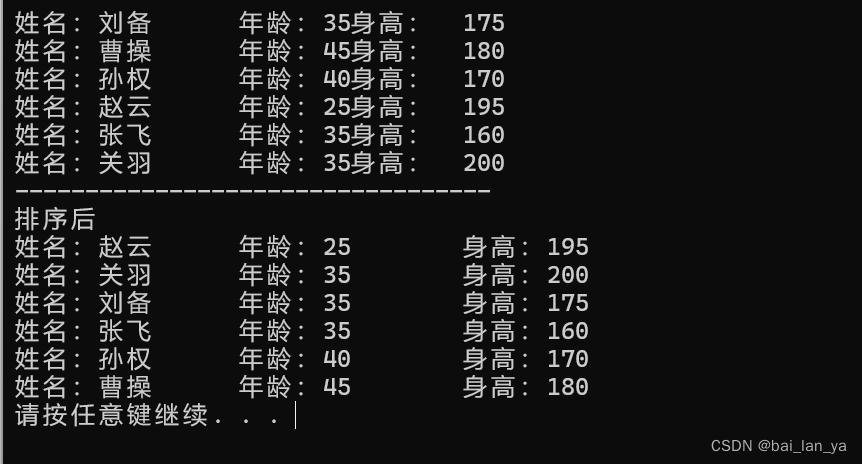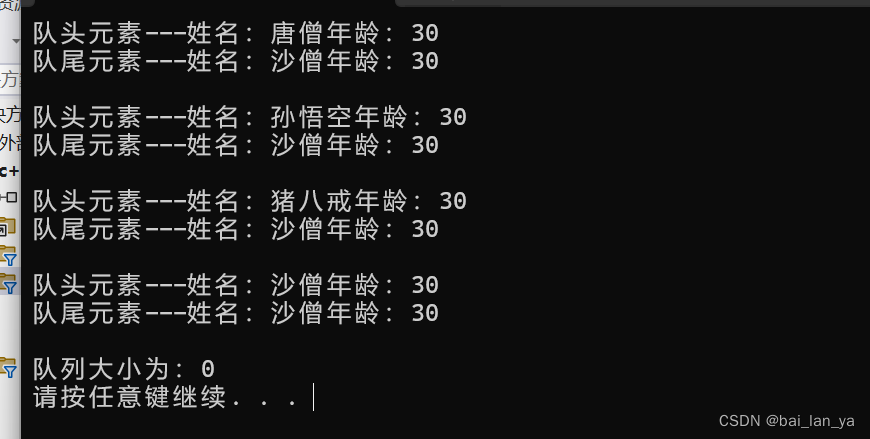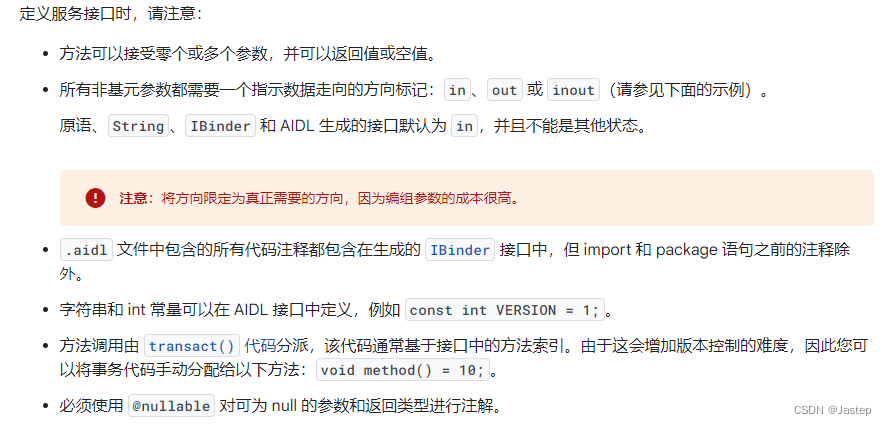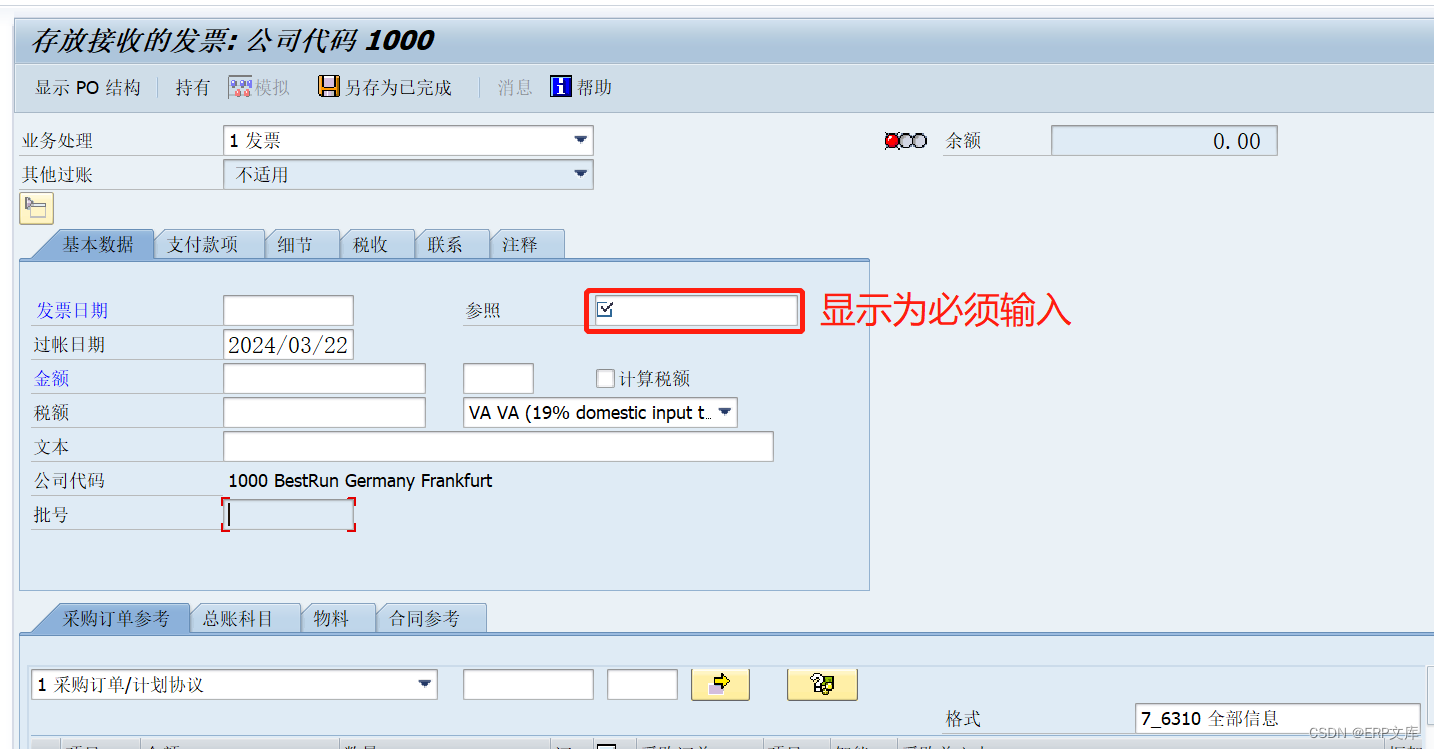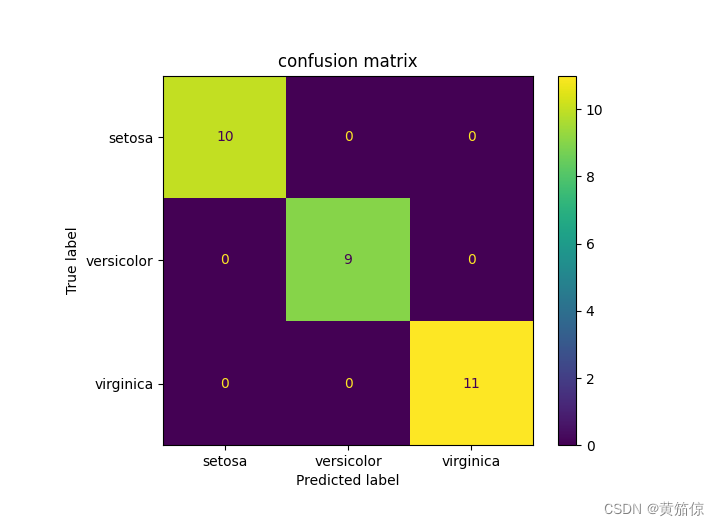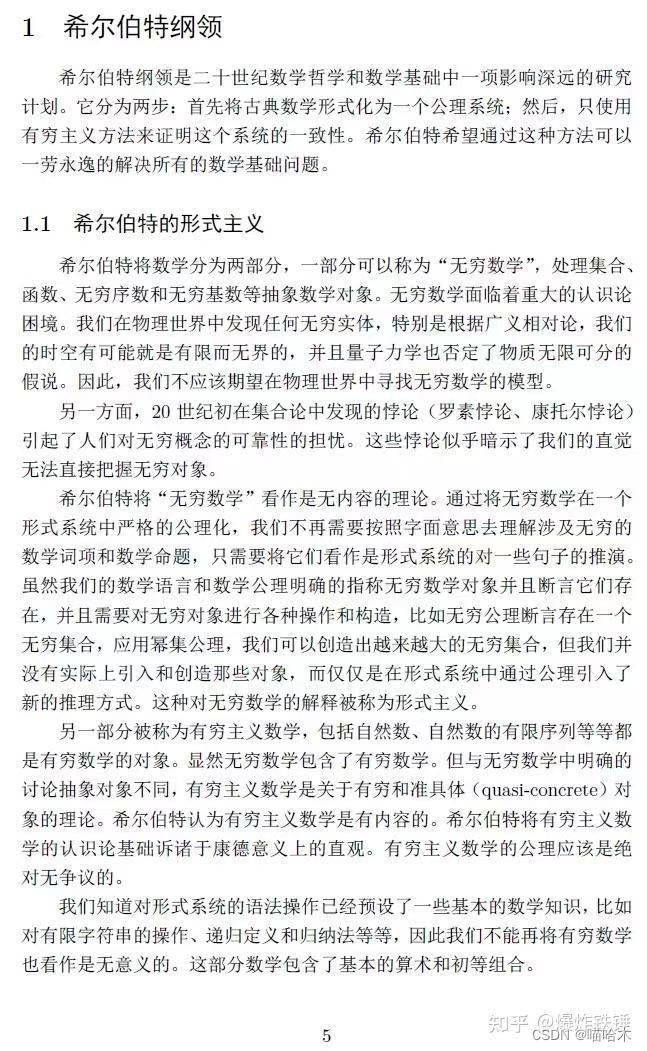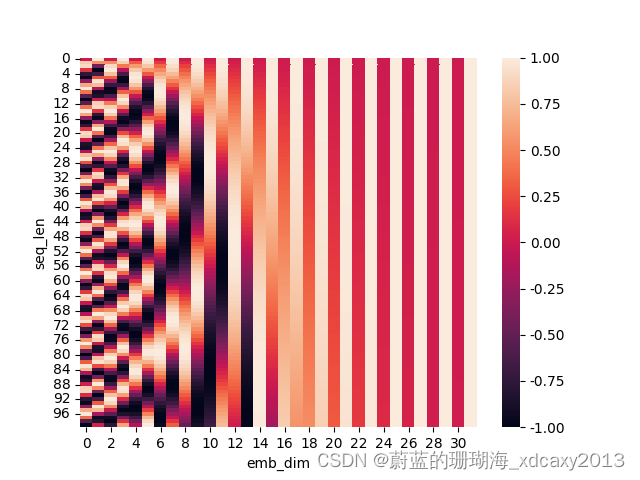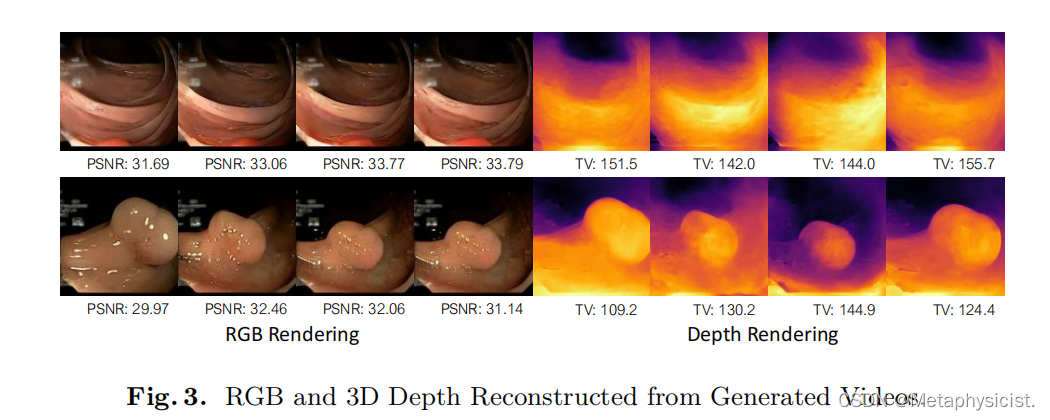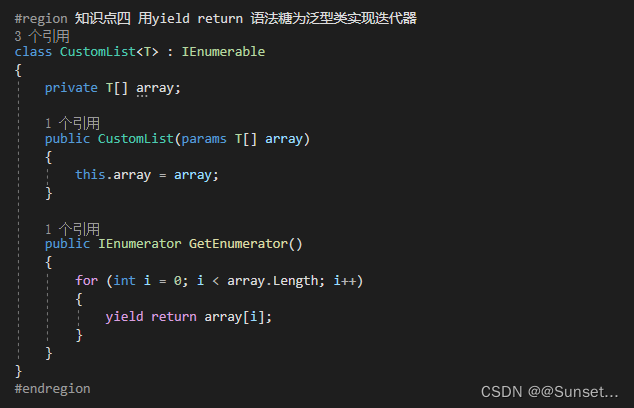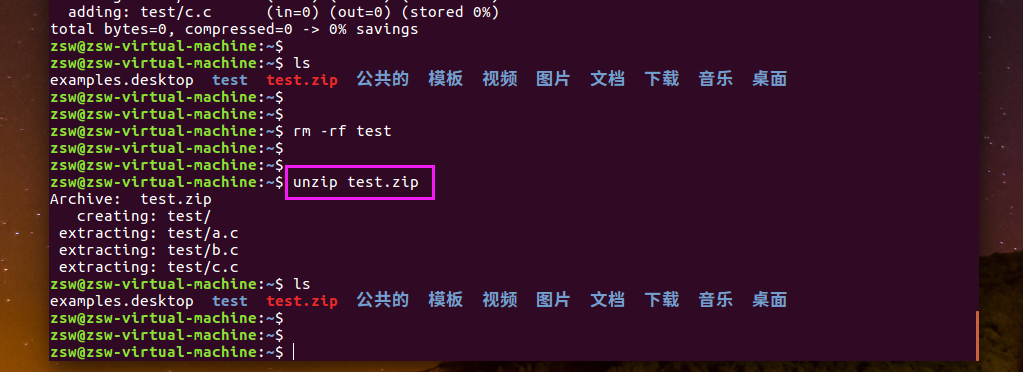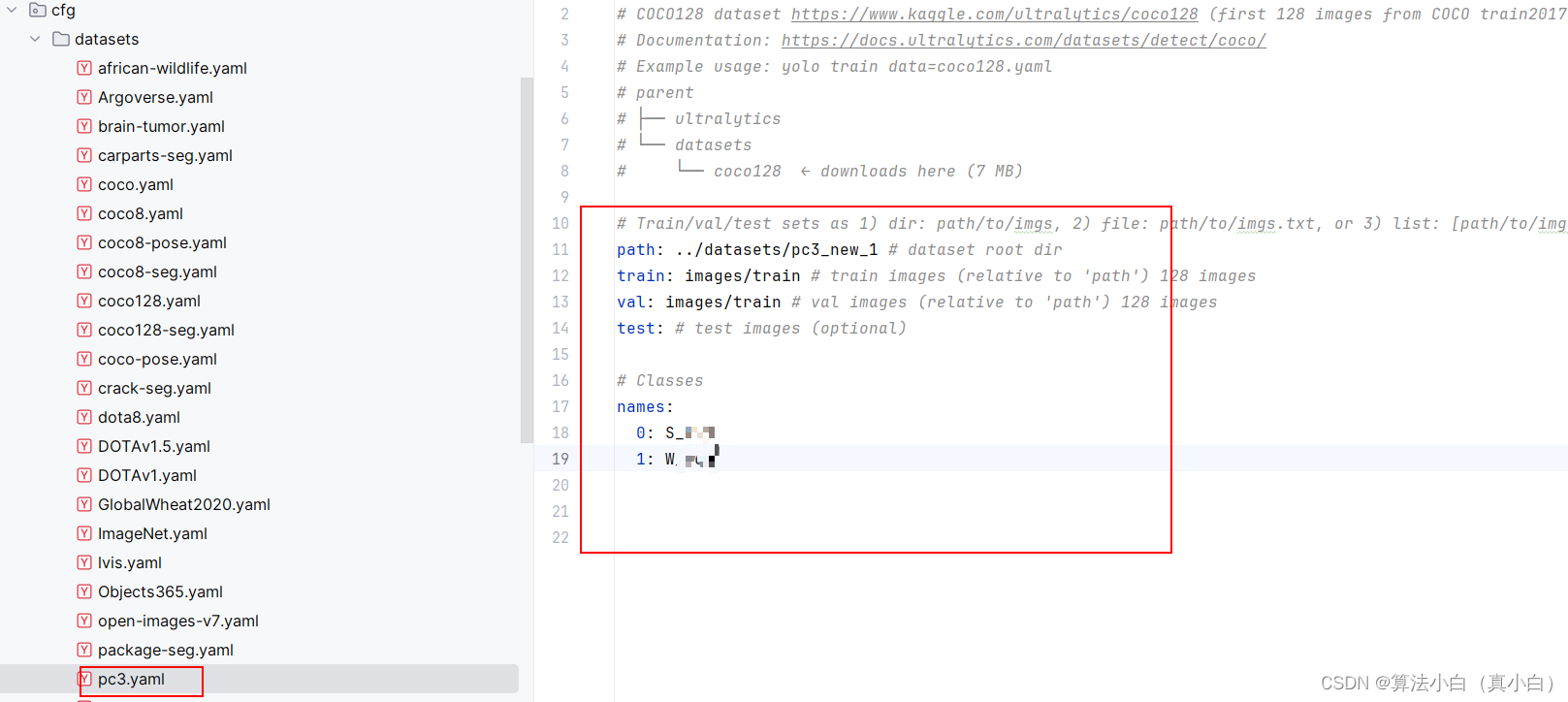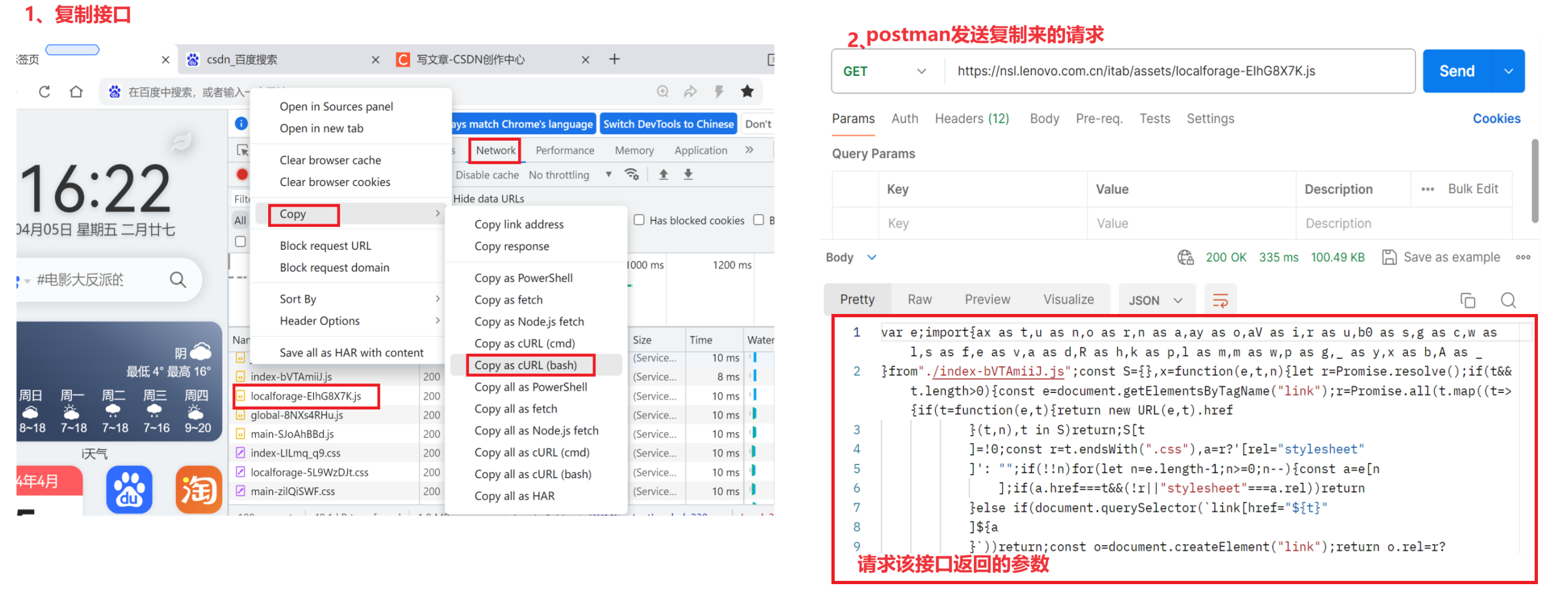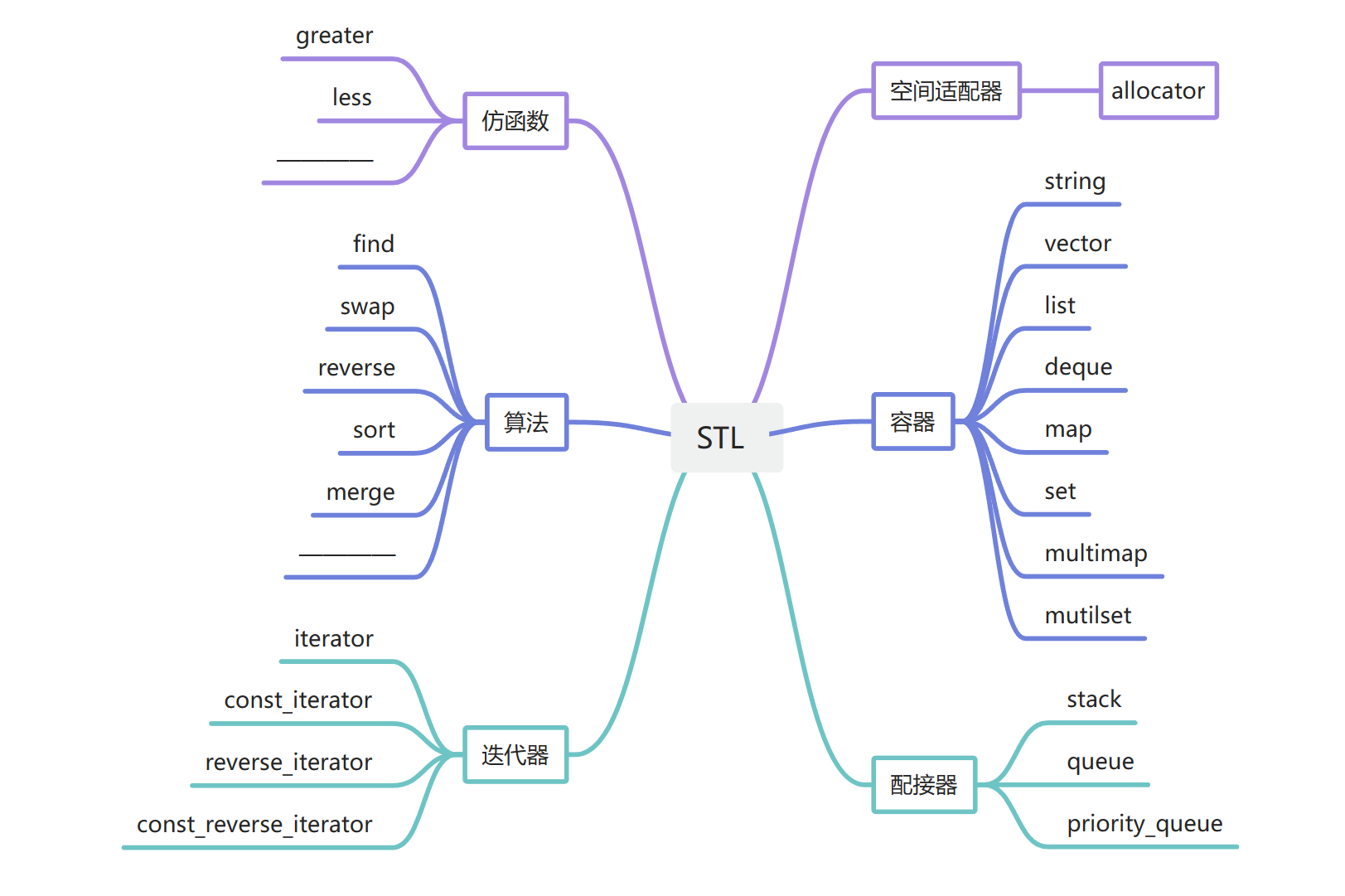1,stack容器
1.1 基本概念
概念:stack是一种先进后出的数据结构,它只有一个出口
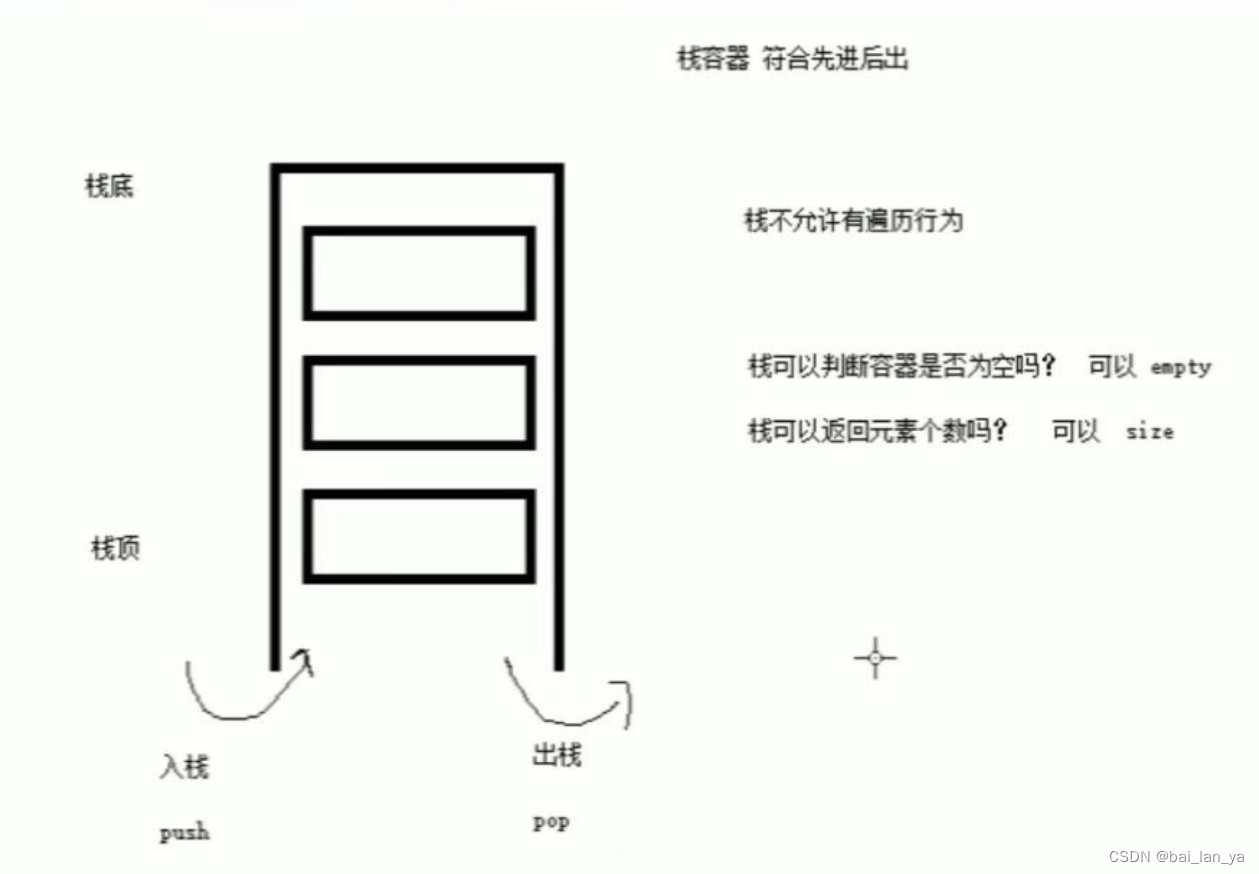
因此:
栈中只有顶端的元素才可以被使用,因此占不允许有遍历行为
栈中进入数据称为--入栈(push)
栈中弹出数据称为--出栈(pop)
1.2 常用接口
功能描述:栈容器常用的对外接口
构造函数:
- stack<T> stk; //stack采用模板类实现,stack对象的默认构造形式
- stack(const stack &stk); //拷贝构造函数
赋值操作:
- stack& operator=(const stack &stk); //重载等号操作符
数据存取:
- push(elem); //向栈顶添加元素
- pop(); //从栈顶移除第一个元素
- top(); //返回栈顶元素
大小操作:
- empty(); //判断栈堆是否为空
- size(); //返回栈的大小
示例:
#include<iostream>
using namespace std;
#include<stack>
void test01()
{
//特点:符合先进后出的数据结构
stack<int>s;
//入栈
s.push(10);
s.push(20);
s.push(30);
s.push(40);
//只要栈不为空,查看栈顶,并执行出栈操作
while (!s.empty())
{
//查看栈顶元素
cout << "栈顶元素为:" << s.top() << endl;
//出栈
s.pop();
}
cout << "栈的大小:" << s.size() << endl;
}
int main()
{
test01();
system("pause");
return 0;
}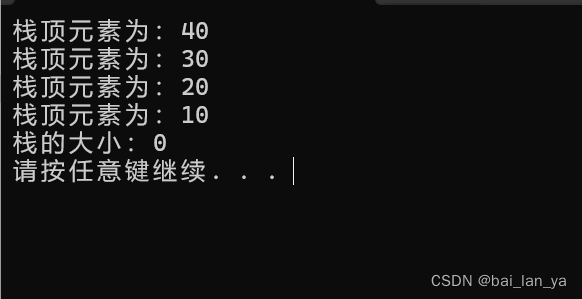
总结:
- 入栈---push
- 出栈---pop
- 返回栈顶---top
- 判断栈是否为空---empty
- 返回栈大小 ---size
2 queue容器
2.1 queue基本概念
概念:queue是一种先进先出的数据结构,它有两个出口
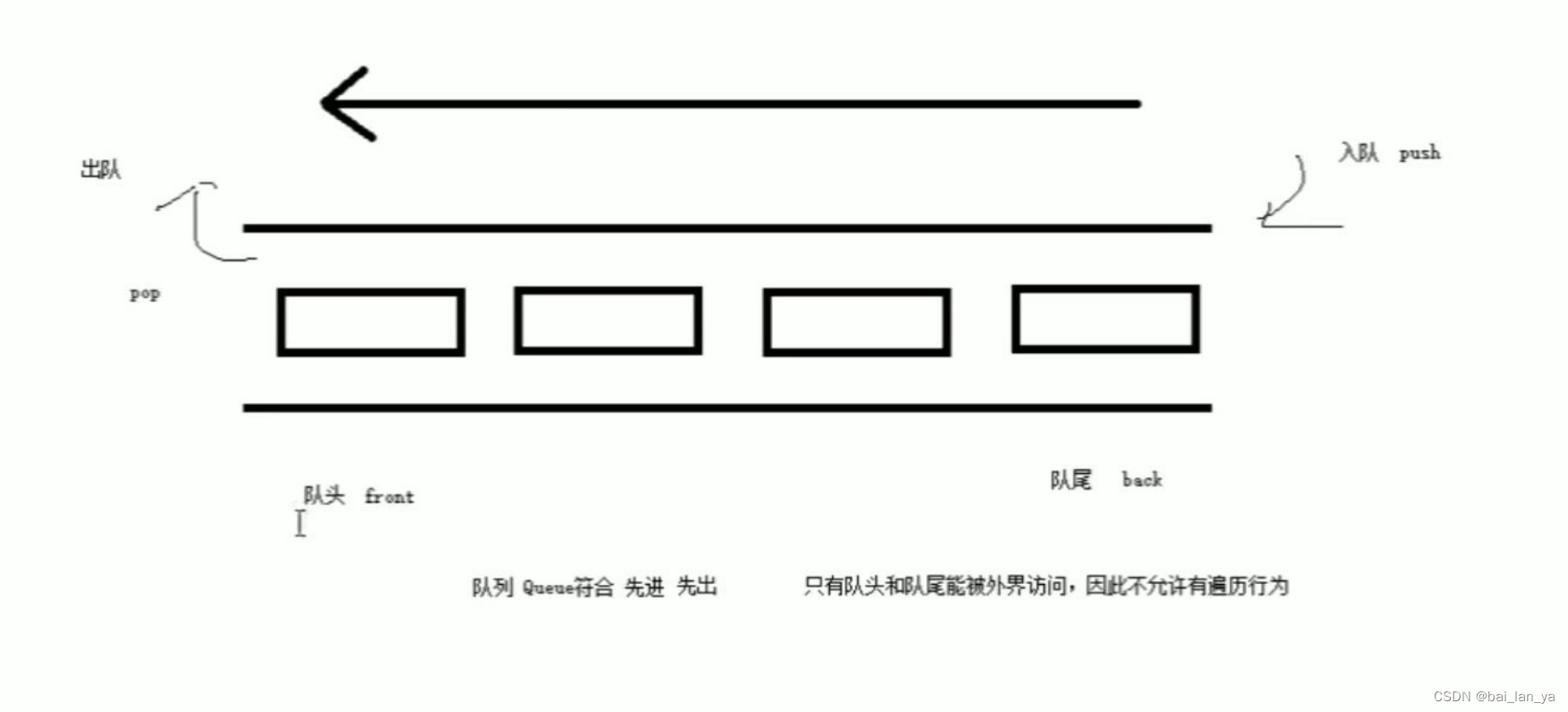
队列容器允许从一端新增元素,从另一端移除元素
队列中只有对头和队尾才可以被外界使用,因此队列不允许有遍历行为
队列中进数据称为--入队(push)
队列中出数据称为--出队(pop)
2..2 queue常用接口
示例:
#include<iostream>
using namespace std;
#include<queue>
//队列Queue
class Person
{
public:
Person(string name, int age)
{
this->m_Name = name;
this->m_Age = age;
}
string m_Name;
int m_Age;
};
void test01()
{
//创建队列
queue<Person>q;
//准备数据
Person p1("唐僧", 30);
Person p2("孙悟空", 30);
Person p3("猪八戒", 30);
Person p4("沙僧", 30);
//入队
q.push(p1);
q.push(p2);
q.push(p3);
q.push(p4);
//判断只要队列不为空,查看对头,查看队尾,出队
while (!q.empty())
{
//查看对头
cout << "队头元素---姓名:" << q.front().m_Name << "年龄:" << q.front().m_Age << endl;
//查看对尾
cout << "队尾元素---姓名:" << q.back().m_Name << "年龄:" << q.back().m_Age << endl;
cout << endl;
//出队
q.pop();
}
cout << "队列大小为:" << q.size() << endl;
}
int main()
{
test01();
system("pause");
return 0;
}3 list容器
3.1 list基本概念
功能:将数据进行链式存储
链表(list)是一种物理存储单元上非连续的存储结构,数据元素的逻辑顺序是通过链表中的指针链接实现的
链表的组成:链表由一系列结点组成
结点的组成:一个是存储数据元素的数据域,另一个是存储下一个结点地址的指针域
STL中的链表是一个双向循环链表
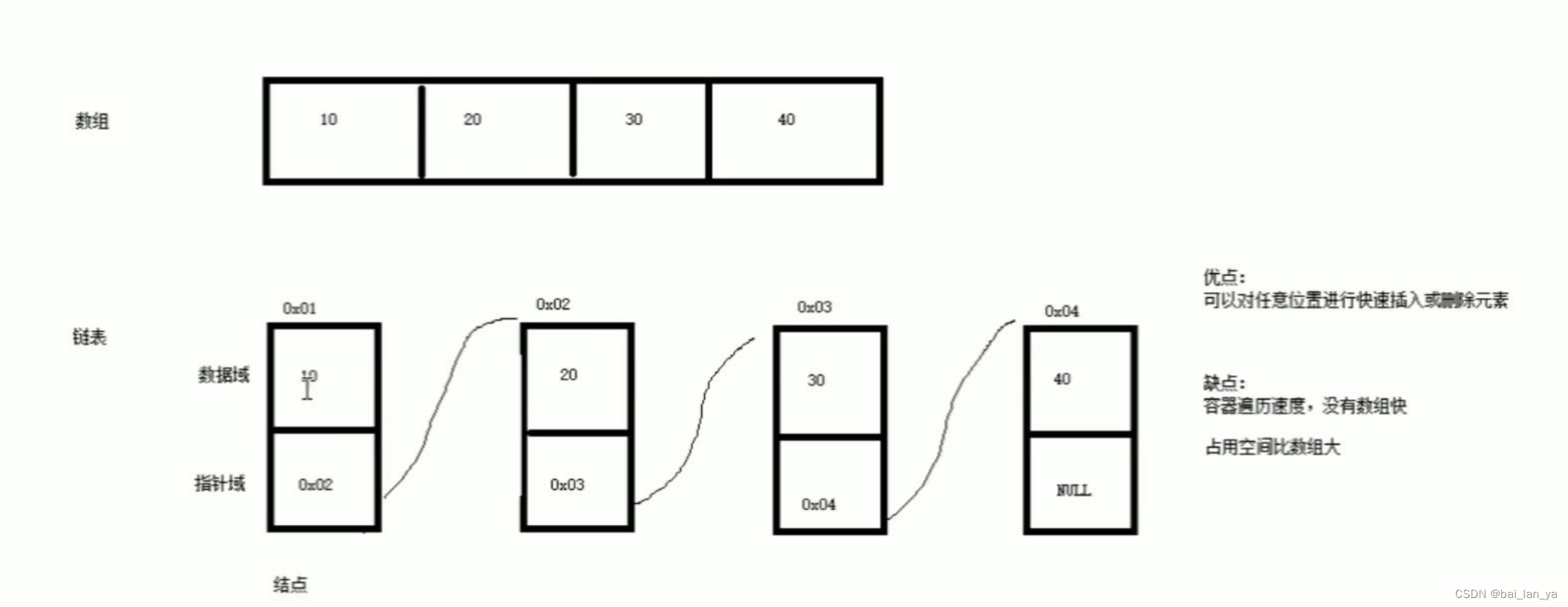
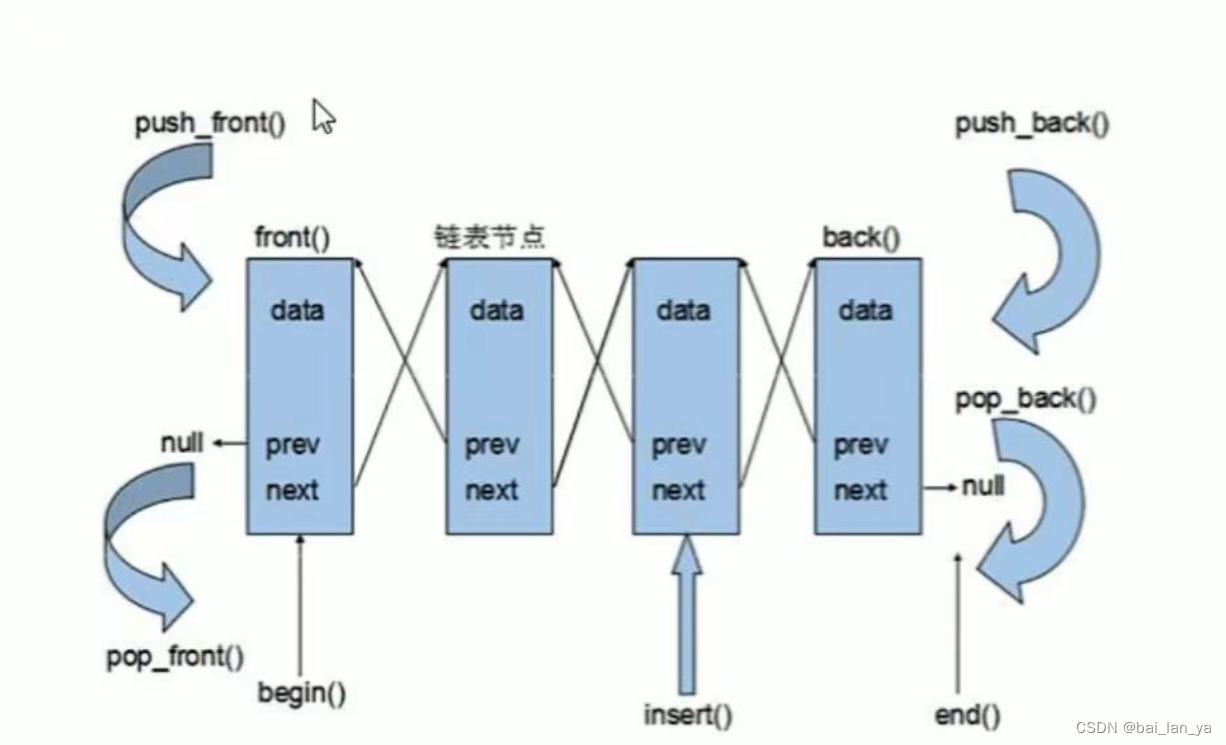
由于链表的存储方式并不是连续的内存空间,因此链表list中的迭代器只支持前移和后移,属于双向迭代器
list的优点:
- 采用动态存储分配,不会造成内存浪费和溢出
- 链表执行插入和删除操作十分方便,修改指针即可,不需要移动大量元素
list的缺点:
- 链表灵活,但是空间(指针域)和 时间(遍历)额外耗费较大
List有一个重要的性质,插入操作和删除操作都不会造成原有list迭代器的失效,这在vector是不成立的。
总结:STL中List和vector是两个最常被使用的容器,各有优缺点
3.2 list构造函数
功能描述:
- 创建list容器
函数原型:
- list<T> lst; //list采用模板类实现,对象的默认构造形式
- list(beg,end); //构造函数将[beg,end]区间中的元素拷贝给本身
- list(n,elem); //构造函数将n个elem拷贝给本身
- list(const list &lst); //拷贝构造函数
示例:
#include<iostream>
using namespace std;
#include<list>
void printList(const list<int>& L)
{
for (list<int>::const_iterator it = L.begin(); it != L.end(); it++)
{
cout << *it << " ";
}
cout << endl;
}
void test01()
{
//创建list容器
list<int>L1;
//添加数据
L1.push_back(10);
L1.push_back(20);
L1.push_back(30);
L1.push_back(40);
//遍历容器
printList(L1);
//区间方式构造
list<int>L2(L1.begin(), L1.end());
printList(L2);
//拷贝构造
list<int>L3(L2);
printList(L3);
//n个elem
list<int>L4(10, 1000);
printList(L4);
}
int main()
{
test01();
system("pause");
return 0;
}
总结:list构造方式同其他几个STL常用容器,熟练掌握即可
3.3 list赋值和交换
函数原型:
- assign(beg,end); //构造函数将[beg,end]区间中的元素赋值给本身
- assign(n,elem); //构造函数将n个elem赋值给本身
- list& operator=(const list &lst); //重载等号操作符
- swap(lst); //将lst与本身的元素互换
示例:
#include<iostream>
using namespace std;
#include<list>
void printList(const list<int>& L)
{
for (list<int>::const_iterator it = L.begin(); it != L.end(); it++)
{
cout << *it << " ";
}
cout << endl;
}
//赋值
void test01()
{
//创建list容器
list<int>L1;
//添加数据
L1.push_back(10);
L1.push_back(20);
L1.push_back(30);
L1.push_back(40);
//遍历容器
printList(L1);
//等号赋值
list<int>L2;
L2 = L1;
printList(L2);
//拷贝赋值
list<int>L3;
L3.assign(L2.begin(), L2.end());
printList(L3);
//n个elem
list<int>L4;
L4.assign(10, 1000);
printList(L4);
}
//交换
void test02()
{
//创建list容器
list<int>L5;
//添加数据
L5.push_back(10);
L5.push_back(20);
L5.push_back(30);
L5.push_back(40);
//n个elem
list<int>L6;
L6.assign(10, 1000);
cout << "交换前" << endl;
printList(L5);
printList(L6);
L5.swap(L6);
cout << "交换后" << endl;
printList(L5);
printList(L6);
}
int main()
{
test01();
test02();
system("pause");
return 0;
}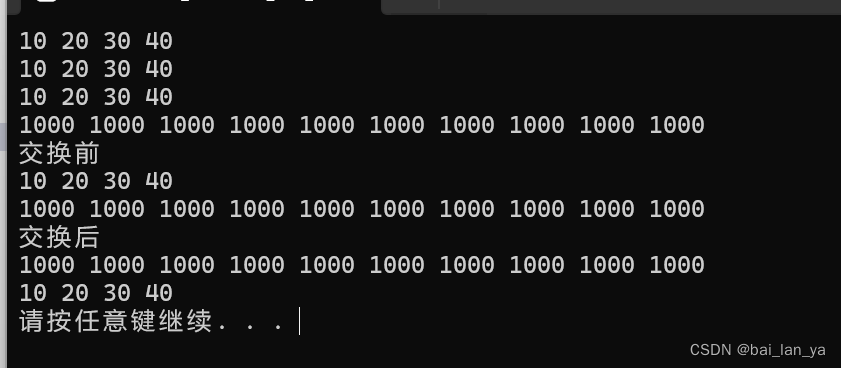 3.4 list大小操作
3.4 list大小操作
对list容器的大小进行操作
函数原型:
- size(); //返回容器中元素的个数
- emgty(); //判断容器是否为空
- resize(num) //重新指定容器的长度为num,若容器变长,则以默认值填充新位置
- //如果容器变短,则未尾超出容器长度的元素被制除。
- resize(num, elem);//重新指定容器的长度为num,若容器变长,则以elem值填充新位置
- //如果容器变短,则末尾超出容器长度的元素被删除。
示例:
#include<iostream>
using namespace std;
#include<list>
//对list容器大小进行操作
void printList(const list<int>& L)
{
for (list<int>::const_iterator it = L.begin(); it != L.end(); it++)
{
cout << *it << " ";
}
cout << endl;
}
void test01()
{
//创建list容器
list<int>L1;
//添加数据
L1.push_back(10);
L1.push_back(20);
L1.push_back(30);
L1.push_back(40);
//遍历容器
printList(L1);
//判断容器是否为空
if (L1.empty())
{
cout << "L1为空" << endl;
}
else
{
cout << "L1不为空" << endl;
cout << "L1的元素个数为:" << L1.size() << endl;
}
//重新指定大小
L1.resize(10, 10000);
printList(L1);
L1.resize(2);
printList(L1);
}
int main()
{
test01();
system("pause");
return 0;
}
总结:
- 判断是否为空---empty
- 返回元素个数---size
- 重新指定个数--- resize
3.5 list插入和删除
功能描述:
- 对list容器进行数据的插入和删除
函数原型:
- push_back(elem); //在容器尾部加入一个元素
- pop_back(); //删除容器中最后一个元素
- push front(elem); //在容器开头插入一个元素
- pop_front(); //从容器开头移除第一个元素
- insert(pos,elem); //在pos位置插elem元素的拷贝,返回新数据的位置
- insert(pos,n.elem); //在pos位置插入n个elem数据,无返回值。
- insert(pos,beg,end); //在pos位置插入[beg,end)区间的数据,无返回值
- clear(); //移除容器的所有数据
- erase(beg,end); //删除[beg,end)区间的数据,返回下一个数据的位置
- erase(pos); //删除poS位置的数据,返回下一个数据的位置
- remove(elem); //删除容器中所有与elem值匹配的元素。
示例:
#include<iostream>
using namespace std;
#include<list>
//对list容器大小进行操作
void printList(const list<int>& L)
{
for (list<int>::const_iterator it = L.begin(); it != L.end(); it++)
{
cout << *it << " ";
}
cout << endl;
}
void test01()
{
//创建list容器
list<int>L1;
//尾插
L1.push_back(10);
L1.push_back(20);
L1.push_back(30);
//头插
L1.push_front(100);
L1.push_front(200);
L1.push_front(300);
//300 200 100 10 20 30
printList(L1);
//尾删
L1.pop_back();
300 200 100 10 20
printList(L1);
//头删
L1.pop_front();
//200 100 10 20
printList(L1);
//insert插入
L1.insert(L1.begin(), 1000);
//1000 200 100 10 20
printList(L1);
//插入
list<int>::iterator it = L1.begin();
L1.insert(++it, 1000);
//1000 1000 200 100 10 20
printList(L1);
//删除
it = L1.begin();
L1.erase(++it);
//1000 200 100 10 20
printList(L1);
//移除
L1.push_back(10000);
L1.push_back(10000);
L1.push_back(10000);
L1.push_back(10000);
printList(L1);
L1.remove(10000);
printList(L1);
//清空
L1.clear();
printList(L1);
}
int main()
{
test01();
system("pause");
return 0;
}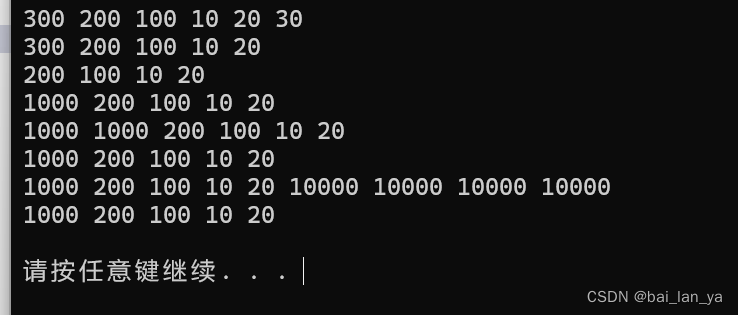
3.6 list数据存取
函数原型:
- front(); //返回第一个元素
- back(); //返回最后一个元素
#include<iostream>
using namespace std;
#include<list>
void test01()
{
//创建list容器
list<int>L1;
//添加数据
L1.push_back(10);
L1.push_back(20);
L1.push_back(30);
L1.push_back(40);
//L1[0] 不可以用[]访问list容器中的元素
//L1.at(0) 不可以用at方式访问list容器中的元素
//原因是list本身链表,不是用连续性空间存储数据,迭代器也是不支持随机访问的
cout << "第一个元素为:" << L1.front() << endl;
cout << "最后一个元素为:" << L1.back() << endl;
//验证迭代器是不支持随机访问的
list<int>::iterator it = L1.begin();
it++;//支持双向
it--;
//it=it+1//不支持随机访问
}
int main()
{
test01();
system("pause");
return 0;
}
总结:
- list容器中不可以通过[]或者at方式访问数据
- 返回第一个元素---front
- 返回最后一个元素---back
3.7 list 反转和排序
功能描述:
- 将容器中的元素反转,以及容器中的数据进行排序
函数原型:
- reverse(); //反转链表
- sort(); //链表排序
示例:
#include<iostream>
using namespace std;
#include<list>
//list 反转和排序
void printList(const list<int>& L)
{
for (list<int>::const_iterator it = L.begin(); it != L.end(); it++)
{
cout << *it << " ";
}
cout << endl;
}
//反转
void test01()
{
//创建list容器
list<int>L1;
//添加数据
L1.push_back(10);
L1.push_back(20);
L1.push_back(50);
L1.push_back(30);
L1.push_back(40);
//遍历容器
cout << "反转前:" << endl;
printList(L1);
//反转
L1.reverse();
cout << "反转后:" << endl;
printList(L1);
}
bool myCompare(int v1, int v2)
{
//降序 就让第一个数 > 第二个数
return v1 > v2;
}
//排序
void test02()
{
//创建list容器
list<int>L1;
//添加数据
L1.push_back(10);
L1.push_back(20);
L1.push_back(50);
L1.push_back(30);
L1.push_back(40);
cout << "排序前:" << endl;
printList(L1);
//排序
//sort(L1.begin (),L1.end ());
//所有不支持随机访问迭代器的容器,不可以用标准算法
//不支持随机访问迭代器的容器,内部会提供对应一些算法
L1.sort(myCompare);
cout << "排序后:" << endl;
printList(L1);
}
int main()
{
test01();
test02();
system("pause");
return 0;
}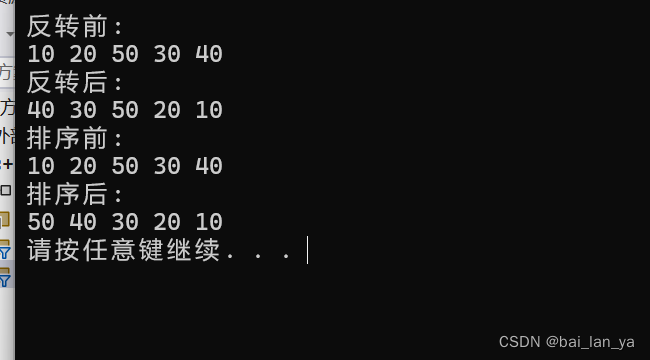
3.8 list排序案例
案例描述:
将Person自定义数据类型进行排序,Person中属性有姓名、年龄、身高
排序规则:按照年龄进行升序,如果年龄相同按照身高进行降序
示例:
#include<iostream>
using namespace std;
#include<string>
#include<list>
//list容器 排序案例 对于自定义数据类型 做排序
//按照年龄进行升序 如果年龄相同则按照身高进行降序
class Person
{
public:
Person(string name, int age, int hight)
{
this->m_Name = name;
this->m_Age = age;
this->m_Hight = hight;
}
string m_Name;
int m_Age;
int m_Hight;
};
bool myCompare(Person &p1, Person &p2)
{
//按照年龄 升序
if (p1.m_Age == p2.m_Age)
{
//年龄相同,就按照升高降序
return p1.m_Hight > p2.m_Hight;
}
return p1.m_Age < p2.m_Age;
}
void test01()
{
list<Person>L;//创建容器
//准备数据
Person p1("刘备", 35, 175);
Person p2("曹操", 45, 180);
Person p3("孙权", 40, 170);
Person p4("赵云", 25, 195);
Person p5("张飞", 35, 160);
Person p6("关羽", 35, 200);
//插入数据
L.push_back(p1);
L.push_back(p2);
L.push_back(p3);
L.push_back(p4);
L.push_back(p5);
L.push_back(p6);
for (list<Person>::iterator it = L.begin(); it != L.end(); it++)
{
cout << "姓名:" << (*it).m_Name << "\t" << "年龄:" << (*it).m_Age << "身高:" << "\t" << (*it).m_Hight << endl;
}
//排序
cout << "----------------------------------" << endl;
cout << "排序后" << endl;
L.sort(myCompare);
for (list<Person>::iterator it = L.begin(); it != L.end(); it++)
{
cout << "姓名:" << (*it).m_Name <<"\t" << "年龄:" << (*it).m_Age << "\t" << "身高:" << (*it).m_Hight << endl;
}
}
int main()
{
test01();
system("pause");
return 0;
}